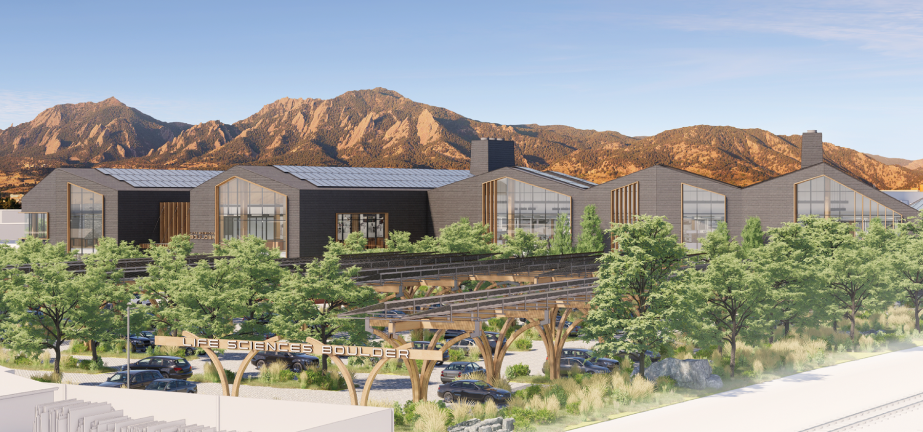Building the Future of Life Sciences Research
The life sciences sector is experiencing a dynamic shift in design and construction, driven by evolving market demands, advances in technology, materials and designs, and an increased focus on sustainability.
The life sciences sector is poised to see substantial growth over the next three years, according to the CRB Group’s Horizons: Life Sciences 2023 Report. The differentiators for AEC firms in the space will be delivering the complex technical specifications and flexibility required by these next-generation facilities.
Harness Emerging Technologies
From BIM and virtual reality to robotics and automation, construction firms are harnessing digital tools over traditional 2D drawings to enhance precision and efficiency. For instance, Swinerton creates detailed 3D models for better project visualization and clash detection through BIM. This leads to increased coordination and productivity gains for contractors, who can see the space virtually and physically. The use of BIM also allows Swinerton to involve its project owners in preconstruction, providing a realistic model of the building and often resolving costly issues before construction even starts.
Currently, Swinerton is leading a significant expansion at Bridge Labs at Pegasus Park in Dallas, TX. This facility marks the first institutionquality, non-incubator space in North Texas. It involves the comprehensive renovation of a 135,000-square-foot life sciences facility. Once finished, the building will provide prebuilt research and development lab suites. These suites, designed with flexibility and equipped with essential tools, will cater to the evolving needs of growth-stage life sciences startups and companies.
To make this project possible, Swinerton has collaborated closely with the design and client team throughout the design and construction phases. They proactively leveraged 3D laser scanning to capture as-built conditions in the existing portion of the structure. This technology has been instrumental in identifying hidden structural elements and building systems embedded within the walls, ceilings, and floors.
In particular, the project team has utilized BIM to efficiently design and install the underground plumbing system. This system is vital to support future lab buildouts within the core and shell of the existing building. The 3D laser scans of the crawl space have enabled the MEPF trade partner to accurately determine the placement and routing of new lines and pipes. By harnessing the virtual model, the project team has revisited the space virtually, enhancing field quality and procurement accuracy.
Adaptable and Flexible Designs
The COVID-19 pandemic highlighted the pressing need for greater R&D capacity and facilities to conduct research and manufacture end-products. In the CRB Report cited above, respondents indicated that decentralizing their manufacturing and having smallscale, flexible manufacturing networks are among some of the latest trends in the life sciences community. This could lead to smaller, more flexible research facilities within one or many geographical locations.
With rapid innovation in life sciences research, the need for flexible and adaptable facilities is surging. Facilities must be able to accommodate changing needs and equipment, necessitating designs that allow for easy reconfigurations. Design aspects like raised floors, movable casework, utility spine systems, and hoist beams foster adaptability.
Swinerton’s Northlake Commons project in Seattle, WA, exemplifies the growing trend towards adaptable lab space and modular components. This project—a testament to innovation—is a five-story, 275,000-square-foot facility that pioneers the use of mass timber in lab-ready buildings. The design, mapped out on a 24-foot by 18-foot grid, is notably compact compared to industry norms. With its tight, efficient layout, the structure explores new architectural and engineering possibilities.
Weber Thompson, the Project Architect, conducted a series of space plans to showcase how a lab office could effectively utilize the unique floor plan, emphasizing the project’s commitment to flexibility and adaptability. In doing so, Northlake Commons sets a new standard in design flexibility for life sciences facilities.
Sustainable and High-Performance Materials
Sustainability is a growing priority throughout many industries, and life sciences facilities are no exception. Green certifications like LEED® and WELL are transforming project specifications, leading to the adoption of sustainable materials like mass timber, low-emission concrete, recycled steel, and insulation with high R-values. Energy efficiency is also increasingly emphasized through building features that help reduce operating costs, such as high-performance glazing, LEDlighting, and advanced HVAC controls.
The Ridgeway Science & Tech facility, a 112,000-square-foot campus in Boulder, CO, showcases this emphasis on a low environmental impact. It is the state’s first net-zero energy and all-electric life sciences building and campus. The facility will accommodate lab spaces adhering to Bio Safety Level 1, 2, and 3 standards.
Stantec, the Project Architect and Sustainability Consultant, has designed the facility to be flexible and adaptable, employing modular construction to quickly respond to market changes. The initial design incorporates provisions for high-sensitivity research environments, including high-vibration criteria and innovative solutions to mitigate the effects of passing trains north of the site.
This project is a testament to the highest Environmental, Social, and Governance (ESG) standards, aiming to secure LEED Platinum, WELL Platinum, Wired Score Gold, and Zero Energy Certifications. The facility will showcase cutting-edge features such as onsite geothermal exchange, both onsite and offsite solar panels, triple glazing, and a meticulously insulated and airtight envelope, further cementing its standing as a beacon of sustainability and high performance in the life sciences sector.
The Future of Life Science Construction
As humanity continues to push the boundaries of scientific research, life sciences construction will inevitably follow suit. These facilities are integral to groundbreaking discoveries and advancements in human health. Close coordination between architects, engineers, contractors, and building owners is essential to delivering highly specialized facilities that support cutting-edge research. As these trends continue to unfold, they are set to redefine the future of this crucial sector.



